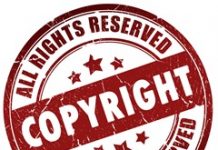 David Pakman brings an economics perspective to the Amazon/Macmillan dispute, complete with a “price elasticity of demand” chart right out of a textbook.
David Pakman brings an economics perspective to the Amazon/Macmillan dispute, complete with a “price elasticity of demand” chart right out of a textbook.
He explains the idea of finding the profit-maximizing price—the price at which the amount of profit times number of units sold is highest—and emphasizes that Amazon has access to the economic data from its millions upon millions of transactions to let them do just that, while publishers do not.
So, why would publishers NOT want Amazon to find the optimal profit-maximizing price? Because, like many entrenched media companies, they have massive legacy cost structures that don’t support selling books at, say $6 wholesale. They offer many unreasonable arguments against this: books are “worth” more, authors won’t make enough money, it’s bad for the industry, etc. These are not economic arguments, but are meant to maintain the status quo economics as long as possible. And it’s ultimately bad for them.
Pakman adds that “low-cost digital distribution, where the marginal cost of each incremental item sold is zero, brings consumer expectation that price must fall. They don’t care if the rent on your offices at 50th and Broadway are $8M a year.”
Of course, Amazon may not necessarily be trying to maximize its profit per se, since as matters stand they are actually losing several dollars on each copy of many of the e-books they sell. But they certainly do know what consumers want to pay.
The Agency Model
Here is an interesting article looking in detail at the implications of the agency model Apple is using and Macmillan is forcing on Amazon. Since it dates from a couple of weeks before the Amazon/Macmillan blow-up, it is free of the impassioned rhetoric that has sprung up in its wake.
The “agency” model is based on the idea that the publisher is selling to the consumer and, therefore, setting the price, and any “agent”, which would usually be a retailer but wouldn’t have to be, that creates that sale would get a “commission” from the publisher for doing so. Since Apple’s normal “take” at the App Store is 30% and discounts from publishers have normally been 50% off the established retail price, publishers can claw back margin even if they don’t get Apple to concede anything from the 30%.
Toward the end of the article, there is some speculation as to “what Amazon might do” that is interesting to consider in the light of what Amazon actually has done:
It is relatively easy for Amazon to pressure one publisher at a time, using their control of buy buttons and marketing recommendations. […] But if all the Big Six publishers do this with widespread support from the agent community, it is hard to see exactly what Amazon can do.
Rumor: Amazon Can’t Put Macmillan Books Back?
In this comment on one of John Scalzi’s blog posts, someone with a friend at Amazon reports that his friend told him something in Amazon’s internals broke when the Macmillan titles were de-listed—it affected more books than was intended, many of them can’t be put back, and the necessary resources have not been dedicated to fixing it manually.
While this is just a rumor, it certainly would explain why the Macmillan titles are not back yet despite Amazon acknowledging it would have to capitulate. I’m surprised Amazon still hasn’t made any kind of statement, though perhaps I shouldn’t be.
Who Moved My Buy Button?
Also found via that Scalzi comment thread, the Authors Guild has launched “WhoMovedMyBuyButton.com”, a website that will monitor desired titles on Amazon and let you know when the buy button status changes.
The site mentions the current Amazon/Macmillan issue—with readers wanting to know when the buy button on a desired title returns—but will also let authors see when their books’ buy buttons go away for whatever reason, such as running out of stock.

































While it’s true that Amazon has information about the price elasticity of books, and Kindle-books in particular, I’d hesitate to say that the publishers don’t. In fact, publishers have experimented for years with price and time elasticity, allowing them to determine exactly when to release paperbacks (close enough that they can ride on the hardback success but long enough that all the hardback buyers have exhausted their purchases). The publishers are also setting price for their long term future, which, for them, means maintaining a retail eco-system. Amazon doesn’t especially care about keeping Borders, Barnes and Noble and the independents in business but the publishers are (rationally) concerned about what will happen if/when Borders shuts down, leaving them with only one major retail outlet and one major online outlet.
Also, Amazon and the publishers are aware not only of price elasticity but cross-elasticity. If Amazon owns 75% or more of the eBook market, and if hardbacks and eBooks are highly cross-elastic, Amazon will do well to reduce prices on its Kindle books to shift demand to something it controls.
Economists are justly suspicious of claims of predatory pricing, but Amazon represents exactly the kind of high-barriers-to-entry enterprise that economic theory says might justify that sort of behavior (I’m certainly not suggesting Amazon is being predatory, simply that it might be rational for them to act that way, absent vigorous anti-trust enforcement).
I truly don’t believe either party is being irrational. Both are trying to maximize what they see as their long-run interests. As a small publisher, I don’t have enough clout in the game to affect whether BN and Borders survives, so I’m happy to allow Amazon to discount my product and pay a full commission based on list price. But I do have nightmares about Amazon and Wal-mart being the only place to buy books. Trust me, few of us wants to live in that world.
Rob Preece
Publisher